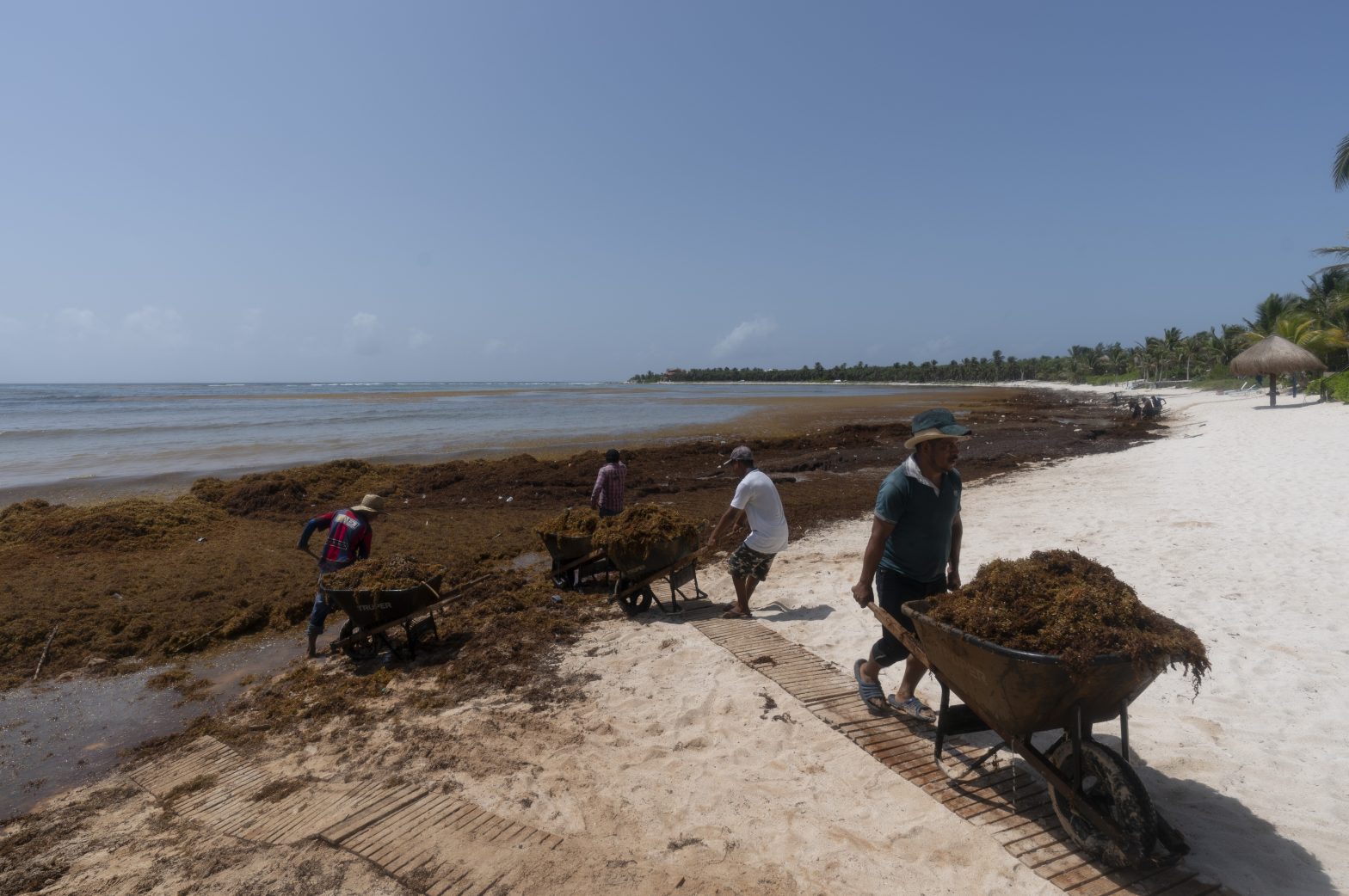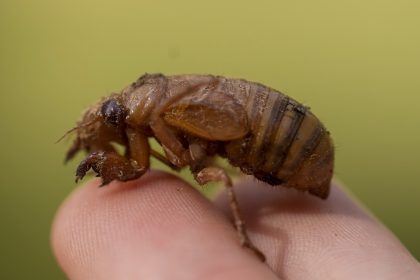Behind Massive Seaweed Belt Headed for Some Atlantic Beaches

WASHINGTON (AP) — A 5,000-mile seaweed belt lurking in the Atlantic Ocean is expected in the next few months to wash onto beaches in the Caribbean Sea, South Florida, and the Yucatán Peninsula in Mexico.
The Great Atlantic Sargassum Belt — as the biomass stretching from West Africa to the Gulf of Mexico is called — contains scattered patches of seaweed on the open sea, rather than one continuous blob of sargassum. It’s not a new occurrence, but satellite images captured in February showed an earlier start than usual for such a large accumulation in the open ocean.
Once it washes ashore, sargassum is a nuisance — a thick, brown algae that carpets beaches, releasing a pungent smell as it decays and ensnares humans and animals who step into it. For hotels and resorts, clearing the stuff off beaches can amount to a round-the-clock operation.
Here’s a look at this year’s sargassum seaweed bloom:
WHAT IS SARGASSUM?
A leafy brown seaweed festooned with what look like berries. The seawood floats on the open ocean and — unlike other seaweeds — it reproduces on the water’s surface, helped by air-filled structures that give it buoyancy.
Sargassum originates in a vast stretch of the Atlantic Ocean called the Sargasso Sea, which lies well off the southeast U.S. The Sargasso has no land boundaries; instead, four prevailing ocean currents form its boundaries.
The matted brown seaweed stretches for miles across the ocean and provides breeding ground, food and habitat for fish, sea turtles and marine birds, according to the National Oceanic and Atmospheric Administration.
“It’s a dynamic, constantly changing set of pieces of this large mass,” said Rick Lumpkin, director of the Physical Oceanography Division at NOAA. “It’s not one big continuous blob heading straight to South Florida.”
WHY IS IT A PROBLEM?
Sargassum piles up on beaches where it quickly decomposes under hot sun, releasing gases that smell like rotten eggs.
In recent years, sargassum has carpeted beaches on some Caribbean islands and Mexico’s Yucatán Peninsula in the spring and summer months. Beach towns and cities and hotels have struggled to keep up with the huge amounts of seaweed that wash ashore.
WHAT ABOUT THIS YEAR?
Some sargassum has already reached beaches in Key West, said Chuanmin Hu, a professor of oceanography at the University of South Florida. But most of it will arrive in the summer, Hu said.
“What is unusual this year compared to previous years is it started early,” Hu said. The algae generally blooms in the spring and summer, but “this year, in the winter, we already have a lot.”
Southern Florida, the Caribbean and the Yucatán Peninsula typically see sargassum piling up in the summer months and could expect the same this year, Hu said.
IS THIS MUCH SARGASSUM UNUSUAL?
It’s a lot, but it’s been worse.
Scientists estimate there’s more than 10 million metric tons of sargassum in the belt this year. Lumpkin called it “one of the strongest years, but not the strongest” since scientists began closely observing the biomass via satellite imagery in 2011.
He said there was more in 2018. The years 2019 and 2021 also saw a great deal of sargassum, he said.
WHAT CAUSES IT?
Scientists aren’t exactly sure, in part because it wasn’t closely monitored until 2011.
“We do know that to get a lot of seaweed, you need nutrients, and you need sunlight. Of course, as you get close to the equator, there’s going to be more sunlight,” said Mike Parsons, a professor of marine science at Florida Gulf Coast University.
Parsons and other experts say agricultural runoff seeping into the Amazon and Orinoco rivers and eventually the ocean could explain the increased growth of the belt on the western side. Parsons said warming waters likely help the seaweed grow faster. Changes in wind patterns, sea currents, rainfall and drought could also affect blooms.
“It may be the entire belt is fed more some years than others by dust that contains iron and other nutrients that comes from the Sahara Desert,” said Lumpkin, of NOAA.
It’s not clear whether climate change is playing any part. Hu said extreme weather that is happening more frequently due to climate change — high wind events, storms, more precipitation — could be a contributor.
IS SARGASSUM HARMFUL TO HUMAN HEALTH?
It can be. When sargassum decomposes, it releases ammonia and hydrogen sulfide, which accounts for the rotten-egg stench. Brief exposure isn’t enough to make people sick, but prolonged exposure — especially for those with respiratory issues — can be dangerous, scientists say.
Hu said it could be an issue for hotel workers and others who may spend hours removing the decomposing sargassum from beaches.
Left to rot on the beach, sargassum can turn into a problem. It can harm coastal marine ecosystems and also supports the growth of fecal bacteria.
___
The Associated Press receives support from the Walton Family Foundation for coverage of water and environmental policy. The AP is solely responsible for all content. For all of AP’s environmental coverage, visit https://apnews.com/hub/climate-and-environment
























